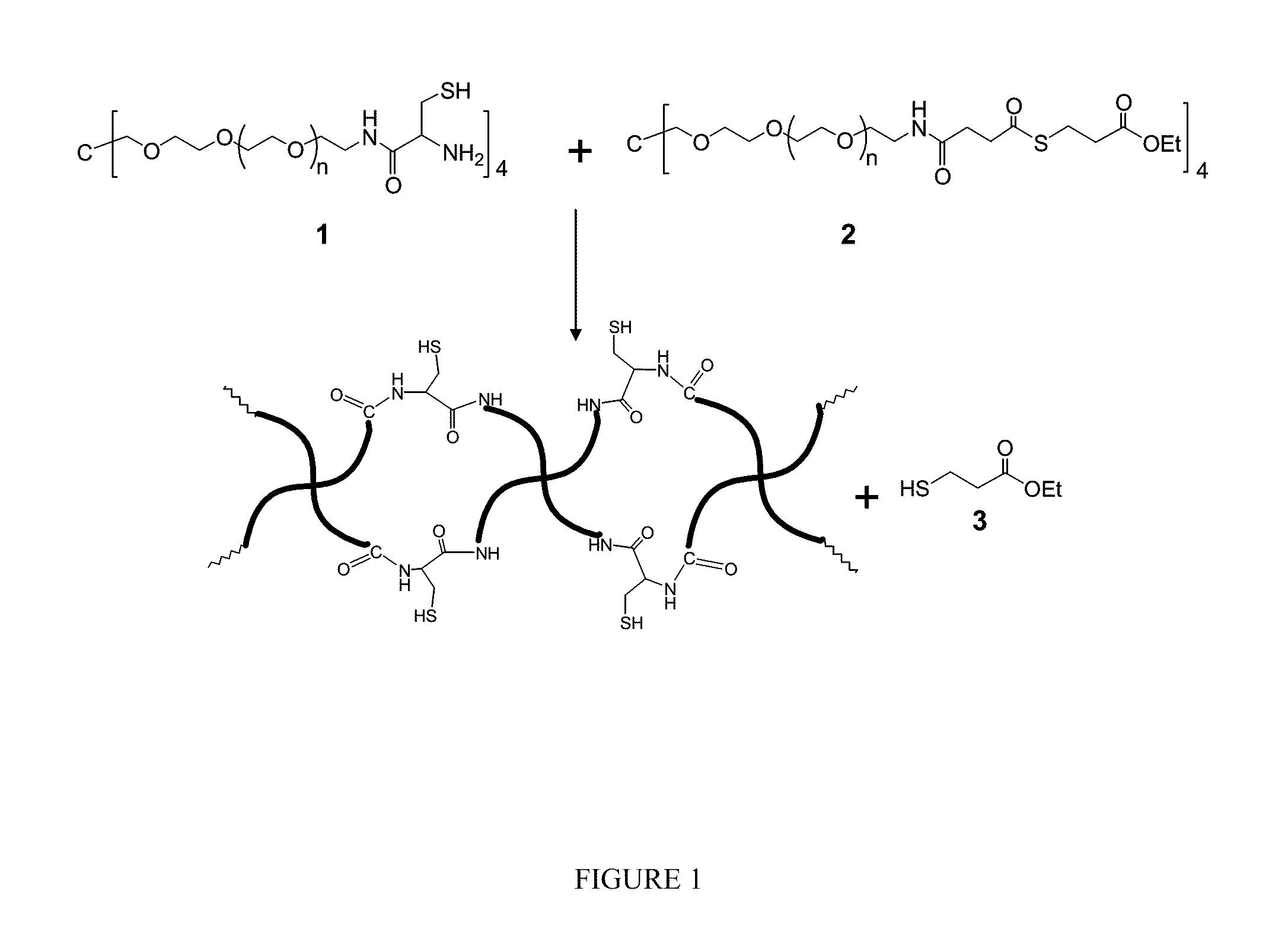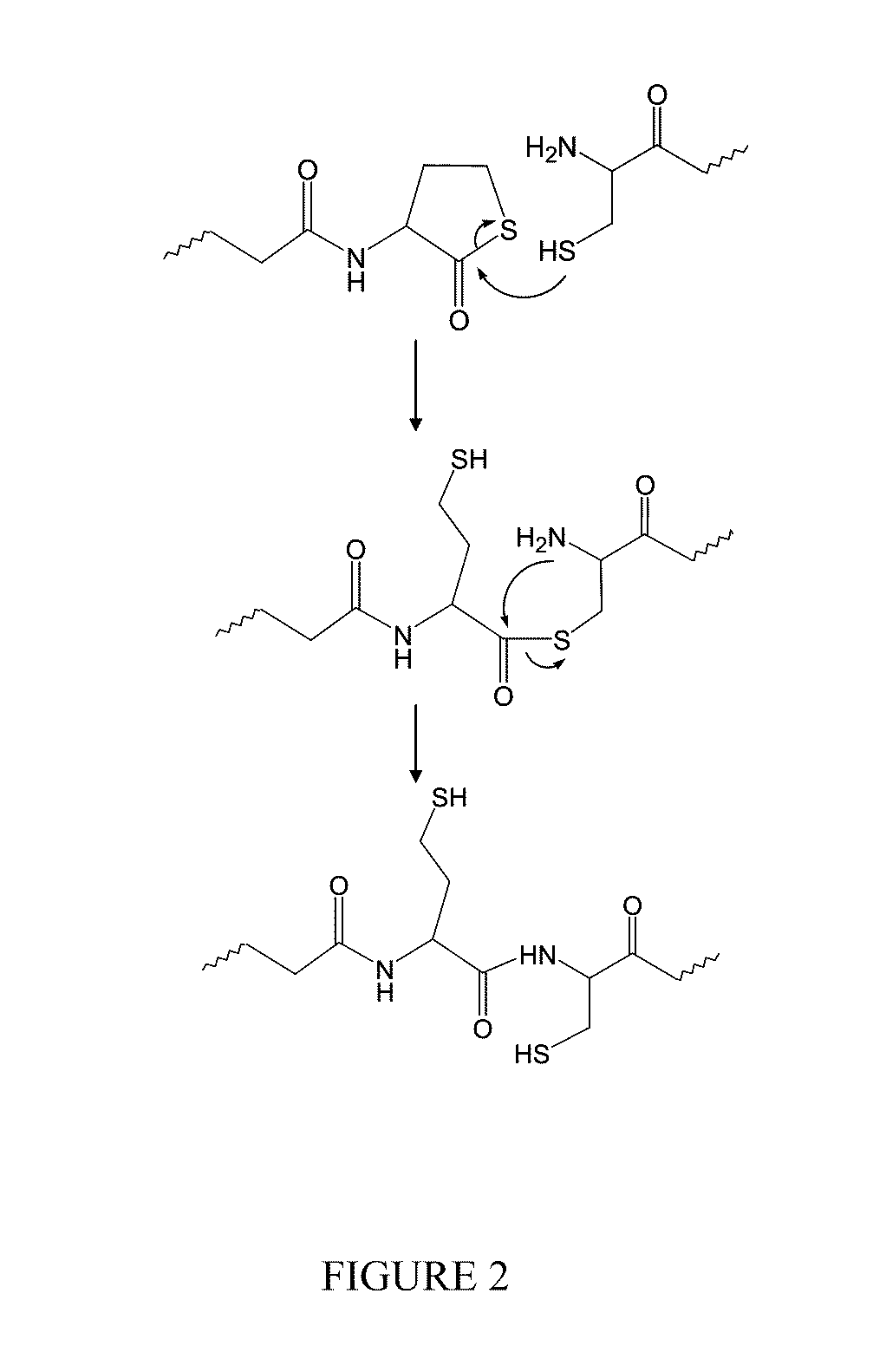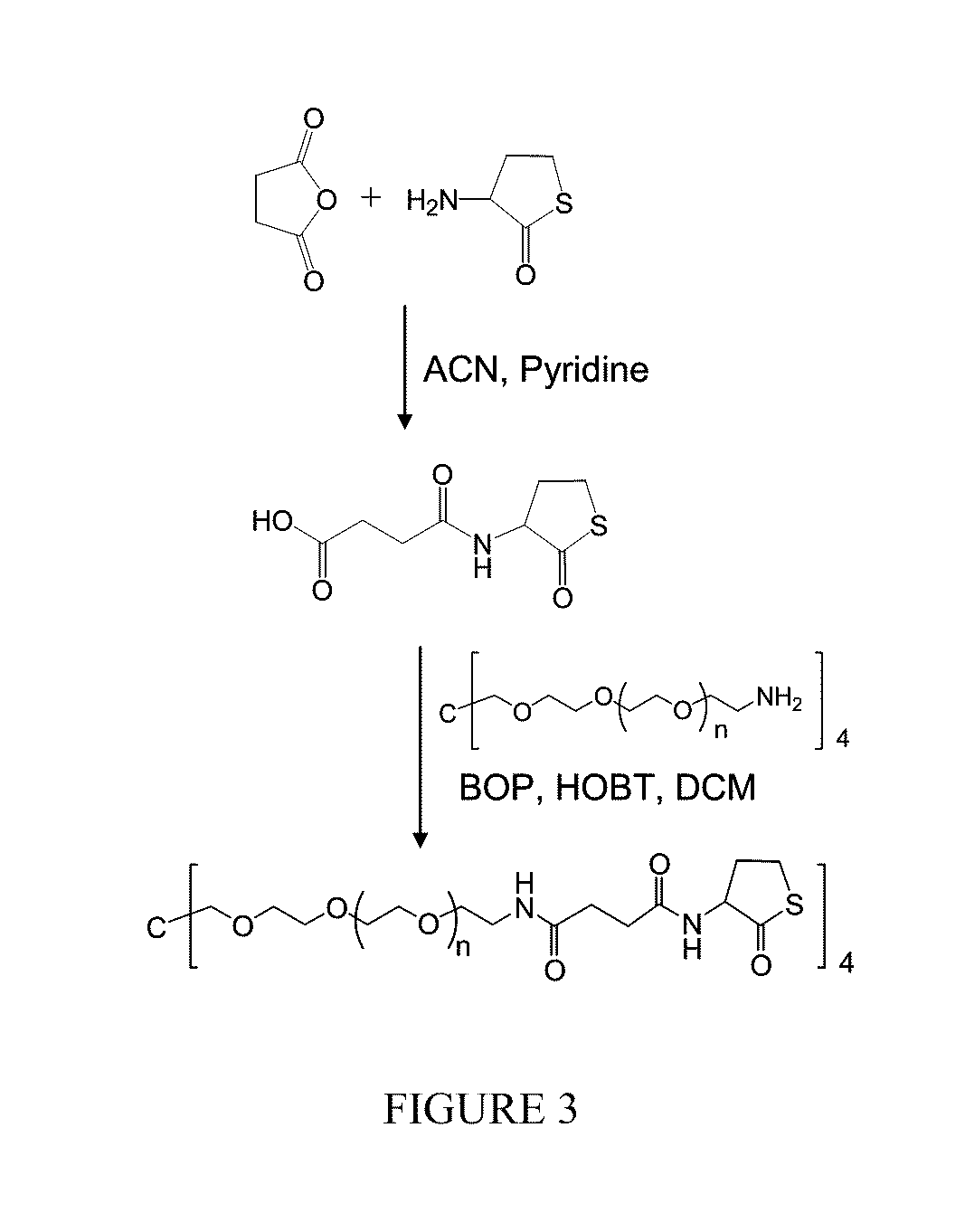Catalyst and byproduct-free native chemical ligation using cyclic thioester precursors
a cyclic thioester and precursor technology, applied in the field of catalyst and byproduct-free native chemical ligation using cyclic thioester precursors, can solve the problems of toxic to certain cells, and achieve the effect of sufficiently rapid cross-linking
- Summary
- Abstract
- Description
- Claims
- Application Information
AI Technical Summary
Benefits of technology
Problems solved by technology
Method used
Image
Examples
example 1
Methods of Macromonomer Synthesis
[0068]A. Synthesis of Cyclic Thiester Used to Make Macromonomer Formula 4
[0069]As shown in FIG. 3, the compound
was added under argon to a stirring solution of succinic anhydride in 25 ml of acetonitrile-pyridine (9:1). The reaction mixture was stirred at room temperature overnight. The solution was concentrated under reduced pressure and dried in vacuo. The residue was dissolved in 50 ml of EtOAc. The EtOAc solution was washed with 0.1 N HCl aqueous solution 30 ml×3, H2O×3, dried over anhydrous MgSO4. After filtration, the solution was concentrated to dry under reduced pressure and in vacuo. NMR spectroscopy data confirmed the product formula:
[0070]B. Materials for Macromonomer Synthesis.
4-armed PEG with amine end groups ( Mw=10k) (PEG4A) was purchased from SunBio PEG Shop. BOP and HOBT were purchased from Peptide International (Louisville, Ky.).
[0071]C. Synthesis of Macromonomer-Formula 4
As further illustrated in FIG. 3, a solution of the product of...
example 2
Synthesis of Biocompatible Hydrogels
[0075]A. Gel Formation.
[0076]In this example, the inventors evaluated gel formation of the hydrogels by mixing cyclic thioester-polymer bioconjugate 4 in pure water (solution A) and N-terminal cysteine-polymer bioconjugate 1 in a buffer solution (solution B) (See FIG. 4). Hydrogels were formed by adding solution B into a test tube (100×13 mm) containing solution A and a moving stirring bar (10×3 mm). Unless otherwise indicated, the mixtures were equimolar in cyclic thioester-polymer and N-terminal cysteine-polymer. Using a stopwatch, the gel formation time was recorded when movement of the stir bar stopped as a result of gel formation.
[0077]B. Viscoelastic Behavior of Hydrogels
[0078]To characterize the viscoelastic behavior of the hydrogels formed by NCL using a cyclic thioester, the hydrogel system produced as described above and in FIG. 4 was analyzed further by oscillatory rheology. Oscillatory rheological experiments were performed with a Paar...
PUM
| Property | Measurement | Unit |
|---|---|---|
| temperature | aaaaa | aaaaa |
| oscillation frequency | aaaaa | aaaaa |
| volume | aaaaa | aaaaa |
Abstract
Description
Claims
Application Information
 Login to View More
Login to View More - R&D
- Intellectual Property
- Life Sciences
- Materials
- Tech Scout
- Unparalleled Data Quality
- Higher Quality Content
- 60% Fewer Hallucinations
Browse by: Latest US Patents, China's latest patents, Technical Efficacy Thesaurus, Application Domain, Technology Topic, Popular Technical Reports.
© 2025 PatSnap. All rights reserved.Legal|Privacy policy|Modern Slavery Act Transparency Statement|Sitemap|About US| Contact US: help@patsnap.com



